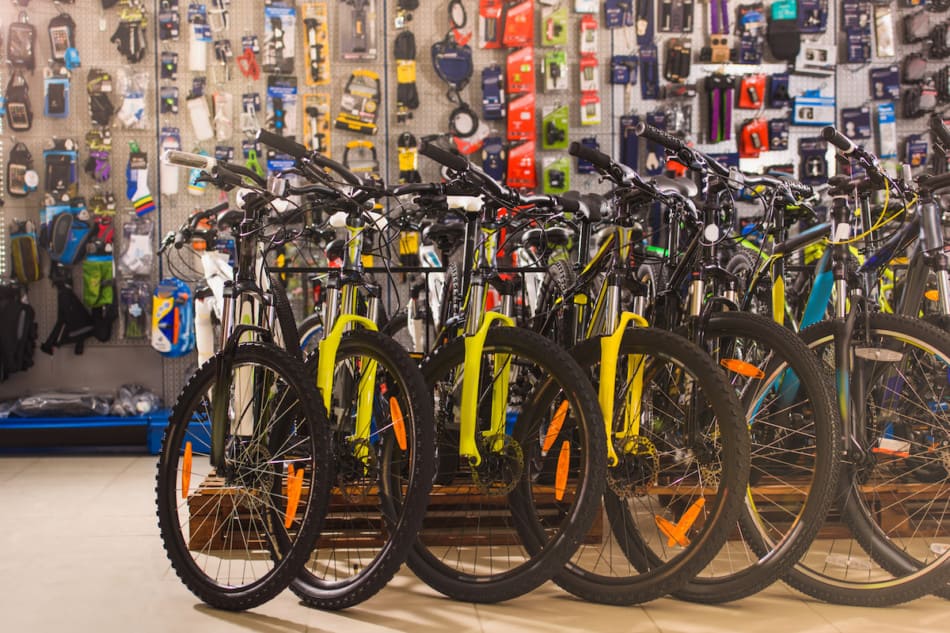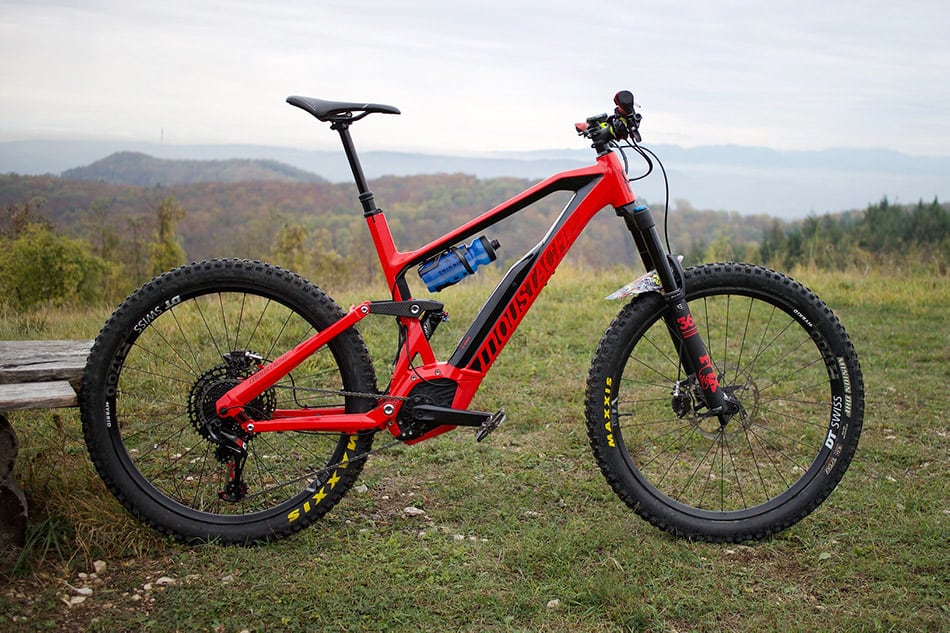
If you’re thinking about getting into mountain biking then you’re probably wondering if a hardtail or full suspension bike is best for a beginner. Given that your bike is the most important piece of equipment, this is a great question to ask!
Beginners can be equally well served by choosing either a hardtail or full suspension mountain bike. The benefits of hardtails include lower cost and weight, higher efficiency, and faster skill development. By comparison, full suspension bikes provide more comfort and versatility.
As you can see, there’s not a “one size fits all” answer to this question. Instead of making a quick decision, it’s worth learning more about the advantages for each type of mountain bike.
Reasons To Pick A Hardtail Bike

#1 – Simplicity means fewer maintenance costs
A hardtail bike has few moving parts making it easier to maintain. Not just easier to maintain, but also fewer components to replace over time as they wear!
People living in areas where the mud, fine gravel, and salt can get into moving parts find this is an advantage since it reduces the maintenance costs.
#2 – Price
As you would expect, a simple design comes with a better price!
Because they have fewer components, hardtail bikes are generally affordable compared to full suspension bikes. This doesn’t mean that there are not high-end i.e. expensive hardtails, just that they provide more entry-level options.
For these reasons, getting a hardtail is a good idea when you have a constrained budget or save a few bucks.
#3 – It makes you a better rider!
The absence of suspension on the rear wheel gives you more control of the bike. You have the responsibility to balance the bike when moving over rough terrain, rocky trails, and tree roots.
Mastering how to do it right also helps you focus on the track making you a better rider!
Temporarily switching back to a hardtail is a tactic used by many riders as it forces them to hone the fine motor skills that are required when riding a bike without rear suspension.
#4 – Hardtails are more efficient
Efficiency in biking is the percentage of energy used for pedaling that powers up the bike. In this case, all the energy you put on the pedals affects the speed of the bike.
If you had a full-suspension bike, the rear wheel suspension would take up a significant percentage of the power.
This makes hardtails particularly fun on flowy trails as you can more efficiently pump your way through the terrain.
This efficiency also applies to climbing where you want every ounce of force put into the pedals to propel you uphill. Granted, most suspensions provide the ability to lock them out which helps negate this downside, but it’s one less thing to think about when you’re riding a hardtail.
#5 – Hardtails weigh less
Because hardtail bikes have fewer mechanical parts, the overall weight is lower than the full suspension bike.
While weight shouldn’t be something that you worry about much on the trail, it certainly makes lifting your bike or moving it easier!
Why You Should Go For A Full Suspension

#1 – Comfort
If you are looking for a more comfortable way to spend time on the trail, then the full suspension bike is your best bet!
Having both a front and rear suspension means that the bike will handle more of the work. This makes it less fatiguing to ride, as well as more enjoyable when it comes to rough terrain.
For extremely technical terrain, downhill, and rocky or rooty sections this is much appreciated!
This isn’t to say that you couldn’t ride similar trails with a hardtail, just that it’s likely more enjoyable on a full suspension bike.
#2 – Gets you biking faster
Going out on a biking track as a beginner is way more comfortable with the full-suspension bike as your companion.
Given that it is easier to balance, it takes a beginner less time to learn and go biking faster, unlike with hardtails where you need to stay focused on the path and use your body as a suspension.
That being said, you still need to learn these bike and body control skills so you’re not completely off the hook!
#3 – Full suspensions are versatile
A full-suspension bike can work efficiently in all terrains. Even though not the best bike for flat biking tracks and uphill climbs, it can still get you past such areas with ease.
Combining its versatility and the comfort you experience during rides makes it the right choice for many.
So which is “best” for beginners?
Using the information above, you’re more than armed to make this decision for yourself.
However, based on my own experience and that of others, I’d like to make a recommendation.
When you’re first getting into mountain biking, developing your skills on the bike are the most important thing. Doing so will pay dividends for years to come!
The best (and fastest) way to do this is by riding a hardtail.
While a hardtail certainly isn’t as comfortable to ride all the time, it does teach you how to handle your bike! Another overlooked factor is that when you’re first getting into any hobby, you don’t need to break the bank.
Buying a decent-quality hardtail is not only cheaper, but you can likely get a better overall bike by not forcing yourself to buy a full suspension bike on the same budget.
Instead of putting money towards a rear suspension, the manufacturers can put better overall components on the bike that will make your riding experience more enjoyable!
Don’t forget that you can always choose to upgrade to a full suspension bike in the future if you get hooked 😉
Can you convert a hardtail to a full suspension?
There is not an easy way to convert a hardtail bike to a full suspension. I know people have tried various ways, but the effort required and the time you spend are not worth it.
Notably, some people have gone as far as cutting the bike parts and welding other parts onto them, but that is too much work, and there’s no guarantee it will work as expected.
Another option tried by some people in the biking community involves buying a new full suspension frame and swapping parts from the old bicycle. That, too, does not give you a perfect full suspension and often doesn’t work.
My advice is that you should buy a new full suspension bike if you have outgrown the hardtail inexperience.
This works well for most people, and you do not have to destroy the old bike for customization. Luckily, you can sell the old bike and top up the amount to buy a full suspension.
How do you improve the efficiency of a full suspension?
Like with hardtail to full suspension conversion, it isn’t easy to convert in the reverse direction. However, many people dislike the full suspension due to low efficiency, especially when riding on flat or paved roads.
But there is a workaround that can help you improve the efficiency and reduce the effort needed to pedal on flat roads or biking tracks.
Enter – the suspension lockout!
These little switches effectively disable the suspension to prevent it from allowing the seat (or fork) to bob up and down. While doing so makes the ride more comfortable, it steals energy and makes for a less efficient ride.
Locking out your suspension on climbs or smooth straight aways is a quick and easy way to increase your pedaling efficiency. Granted, it won’t reach that of a hardtail, but at least it’s an improvement!
Recommended Reading
Before you go, I’d recommend taking a look at the following resources that answer many common mountain biking questions.
